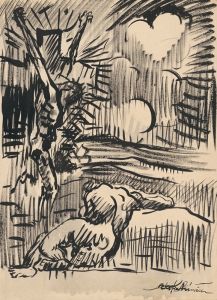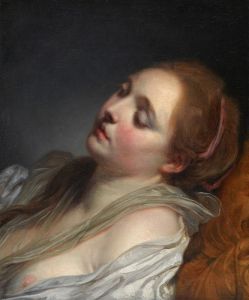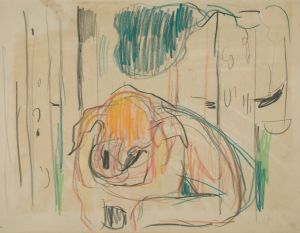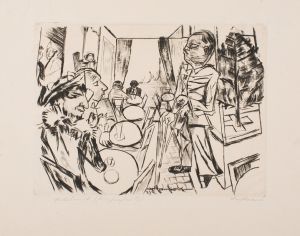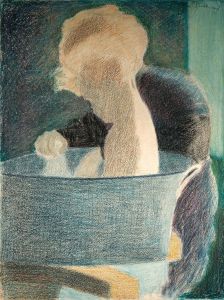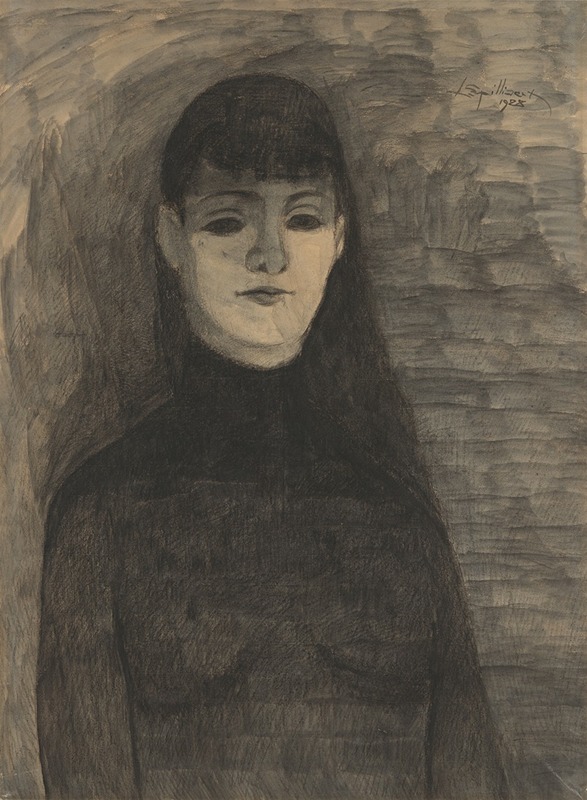
Melancholie
A hand-painted replica of Léon Spilliaert’s masterpiece Melancholie, meticulously crafted by professional artists to capture the true essence of the original. Each piece is created with museum-quality canvas and rare mineral pigments, carefully painted by experienced artists with delicate brushstrokes and rich, layered colors to perfectly recreate the texture of the original artwork. Unlike machine-printed reproductions, this hand-painted version brings the painting to life, infused with the artist’s emotions and skill in every stroke. Whether for personal collection or home decoration, it instantly elevates the artistic atmosphere of any space.
Léon Spilliaert's "Melancholie" is a notable work by the Belgian symbolist painter, created in 1908. Spilliaert, born in 1881 in Ostend, Belgium, is recognized for his unique style that often combines elements of symbolism and expressionism. His works frequently explore themes of solitude, introspection, and existential contemplation, which are vividly reflected in "Melancholie."
The painting "Melancholie" is executed in a muted palette, primarily utilizing shades of black, grey, and brown, which contribute to its somber and introspective mood. Spilliaert often employed a limited color scheme to evoke emotional depth and to focus the viewer's attention on the subject matter rather than the vibrancy of color. This approach is evident in "Melancholie," where the subdued tones enhance the sense of isolation and introspection.
The composition of "Melancholie" is characterized by its simplicity and focus on the central figure, which is a hallmark of Spilliaert's style. The figure, often interpreted as a self-portrait or a representation of the artist's inner world, is depicted in a contemplative pose. The use of light and shadow in the painting is particularly striking, with the figure emerging from a dark background, creating a dramatic contrast that emphasizes the theme of inner reflection.
Spilliaert's work is often associated with the broader symbolist movement, which sought to express the emotional and spiritual experiences of the artist. "Melancholie" embodies this approach, as it captures a moment of deep personal reflection and emotional complexity. The painting does not provide a narrative or specific context, allowing viewers to project their interpretations and emotions onto the work.
The setting of "Melancholie" is ambiguous, with minimal details that suggest an interior space. This lack of specificity is typical of Spilliaert's work, as it allows the focus to remain on the emotional state of the figure rather than the environment. The sparse background also contributes to the overall feeling of solitude and introspection.
Léon Spilliaert's "Melancholie" is part of a larger body of work that explores themes of existential angst and the human condition. His paintings often reflect his own experiences and emotions, as Spilliaert was known to have struggled with health issues and periods of depression throughout his life. These personal challenges are thought to have influenced his artistic output, imbuing his work with a sense of authenticity and emotional depth.
Today, Spilliaert's work, including "Melancholie," is celebrated for its innovative approach to composition and its ability to convey complex emotional states. His paintings are held in high regard within the art community and are featured in various public and private collections worldwide. "Melancholie" continues to resonate with audiences, offering a poignant glimpse into the artist's introspective world and the universal experience of melancholy.






